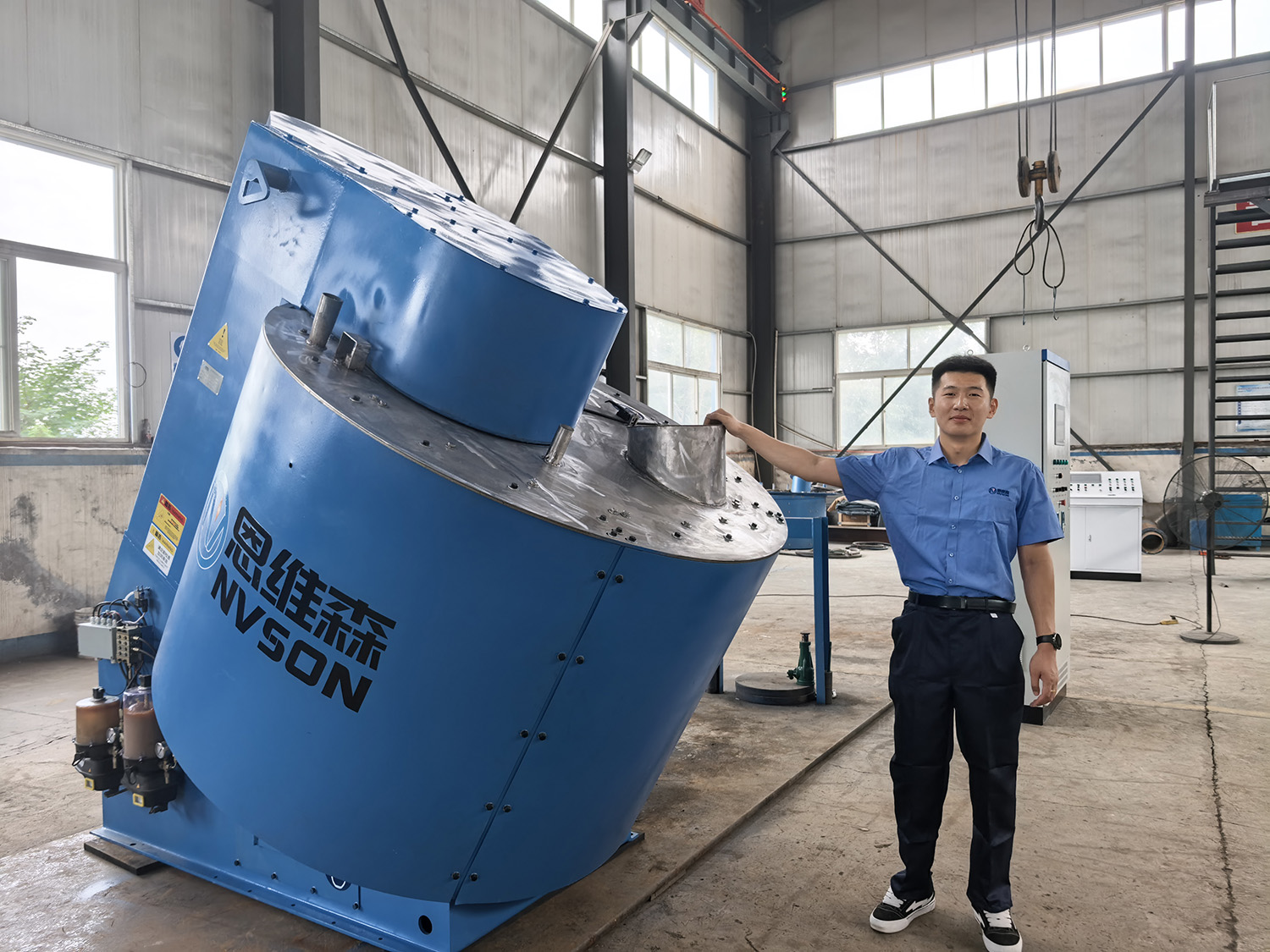In the current context where industrial production pursues "cost reduction and efficiency improvement", the energy consumption and production capacity of equipment directly affect the core profits of enterprises. Relying on structural innovations to traditional granulation equipment, the inclined mixing granulator has achieved breakthroughs in two key dimensions—energy saving and production capacity—becoming a preferred choice for more and more enterprises to optimize their production processes. Today, starting from technical principles and practical applications, we will unveil the logical basis behind its advantages.
I. Energy-Saving Advantages: From Structural Design to Energy Consumption Control, Every Kilowatt-Hour Is Used Where It Matters Most
The core reason for the relatively high energy consumption of traditional vertical or horizontal granulators lies in "high material movement resistance" and "excessive energy consumption due to fragmented processes". The inclined mixing granulator, however, reduces energy consumption at the source through three major design features:
- Inclined Structure Reduces Material Friction and Lowers Motor Load
The inclined mixing granulator is designed with an adjustable inclination angle of 30°-45° for its main body. When materials move inside the machine, they no longer "push hard" against the bottom of the machine body (as in horizontal equipment) nor do they cause "wall-sticking friction" (a problem with vertical equipment). Under the combined action of gravity and double-helix stirring paddles, materials are mixed in a composite movement mode of "rolling + sliding", reducing the friction area with the inner wall of the machine body by more than 40%. This design directly reduces the operating resistance of the motor. According to actual measurements, under the same production capacity, the motor load of the inclined equipment is 20%-25% lower than that of traditional horizontal equipment, saving 1.2-2.5 kilowatt-hours of electricity per hour. Based on industrial electricity prices and 300 days of annual operation, a single piece of equipment can save 15,000-30,000 yuan in electricity costs per year. - Integrated Process Eliminates "Energy Consumption from Material Transfer"
In traditional production, "mixing" and "granulation" require two separate pieces of equipment. When transferring materials from the mixer to the granulator, not only manual labor or conveyor belts are needed (resulting in additional energy consumption), but also hidden costs increase due to material loss during transfer (such as dust scattering and residues). The inclined mixing granulator realizes an integrated "mixing-granulation" process, where materials complete two processes in the same equipment without the need for a transfer link. Taking chemical fertilizer granulation in the chemical industry as an example, the integrated process can reduce energy loss in the transfer link by 15% while lowering material loss by 5%-8%, indirectly helping enterprises save raw material procurement costs. - Intelligent Temperature Control and No-Load Protection Avoid "Ineffective Energy Consumption"
New-generation inclined mixing granulators are equipped with an intelligent temperature control system and no-load protection function: when materials reach the preset uniformity after mixing, the equipment automatically reduces the stirring speed to avoid energy consumption from "over-stirring"; if there is no-load operation due to insufficient material supply, the equipment triggers a low-speed operation mode instead of maintaining high-speed idling. This dynamic energy consumption adjustment mechanism can reduce ineffective energy consumption by 10%-15%, making it particularly suitable for enterprises with unstable production batches.
II. Capacity Advantages: From Efficiency Improvement to Quality Assurance, Achieving Both "High Output" and "High Quality"
Increasing production capacity is not simply about "speeding up", but rather improving the effective output per unit time while ensuring product quality. By optimizing material processing efficiency and stability, the inclined mixing granulator achieves the dual goals of "high output and high quality":
- Three-Dimensional Mixing Speeds Up, Shortening Single-Batch Processing Time
The mixing mode of traditional equipment is mostly "one-way movement" (e.g., horizontal stirring for horizontal equipment, vertical stirring for vertical equipment), which requires 30-40 minutes to mix materials uniformly. In contrast, the double-helix stirring paddles of the inclined equipment, combined with the inclined machine body, form a three-dimensional mixing mode of "circumferential movement + vertical rolling". Materials form a dead-angle-free convective cycle inside the machine, shortening the time required to reach a mixing uniformity of over 95% to 15-20 minutes—a 40%-50% improvement in single-batch processing efficiency. Taking solid beverage granulation in the food industry as an example, traditional equipment can complete 12-15 batches of production per day (8 hours), while inclined equipment can increase this to 20-22 batches, boosting daily production capacity by more than 50%. - Uninterrupted Continuous Production Reduces "Downtime Loss"
Due to high discharge residues (usually 5%-8%), traditional granulators require 30-60 minutes of downtime for cleaning every time the production batch is changed, which seriously affects continuous production efficiency. Thanks to its inclined discharge design, the inclined equipment allows finished particles to be discharged quickly by gravity alone, with discharge residues of less than 1% and cleaning time shortened to 10-15 minutes. For the pharmaceutical industry, which requires multi-batch production (e.g., granulation of raw materials for capsules of different specifications), the inclined equipment can reduce downtime for cleaning by 2-3 hours per day, increasing effective production time by 25%-30% and significantly improving annual production capacity. - Stable Particle Quality Reduces "Energy Consumption from Rework"
The core of production capacity lies in "effective output". If rework is required due to unqualified particle quality, it will instead increase energy consumption and costs. The inclined mixing granulator ensures particle quality through two key designs: first, the inclination angle can adjust the material residence time to precisely control particle size (with a deviation of within ±0.2mm); second, the sealed stirring chamber prevents materials from being dampened or contaminated, reducing the rate of unqualified products. Statistics show that for enterprises using inclined equipment, the rework rate of particle products drops from 8%-12% (with traditional equipment) to 2%-3%. For every 1 ton of reworked materials reduced, enterprises can save approximately 2,000-3,000 yuan in energy consumption and raw material costs for reprocessing.
III. Conclusion: The Essence of Cost Reduction and Efficiency Improvement Lies in "Technology Adapting to Needs"
The energy-saving and capacity advantages of the inclined mixing granulator do not rely on "high power" or "high speed", but rather on structural innovations that make the equipment better align with the actual needs of industrial production—achieving more efficient material processing with less energy consumption, and ensuring higher effective output with more stable processes. For enterprises pursuing refined cost control and production capacity improvement, choosing an inclined mixing granulator is not just selecting a piece of equipment, but adopting a production model centered on "cost reduction and efficiency improvement", helping enterprises gain a cost advantage in the fierce market competition.





